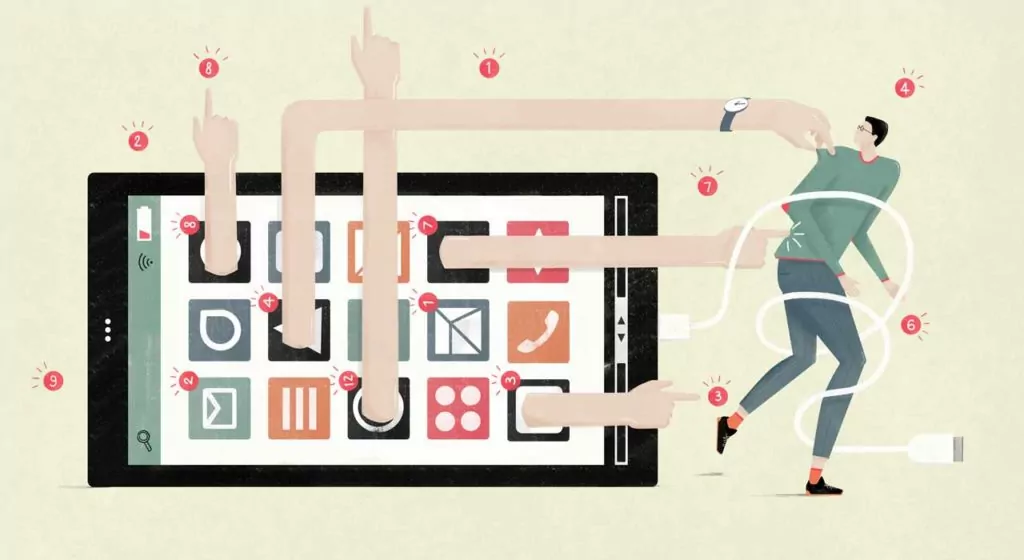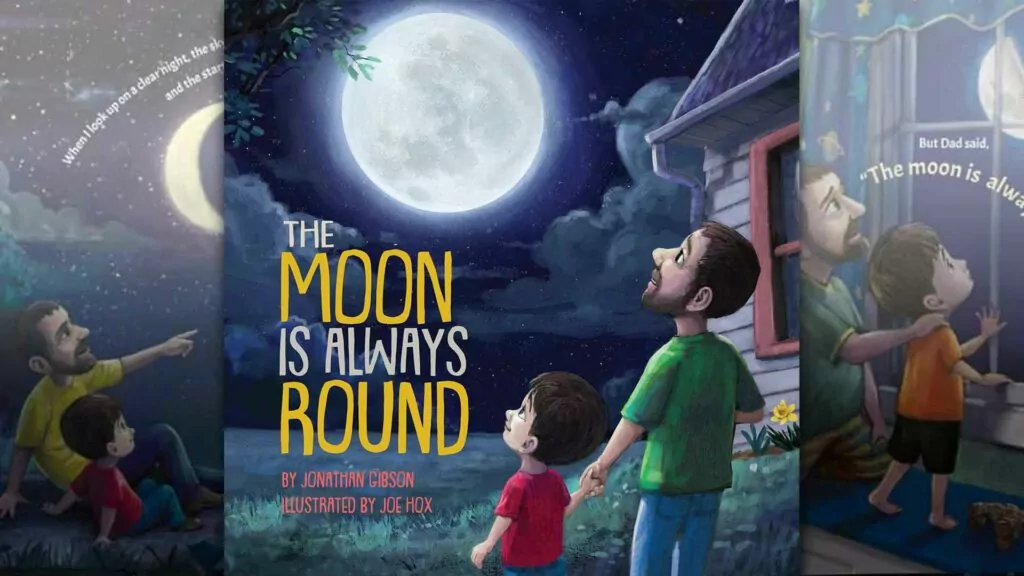Reconnect information and action
*****
In today’s hyperconnected world, information comes at us fast and furious, from every direction, 24-7. We wake up to news alerts about a major earthquake in Japan or a political assassination in Ecuador. We open our social media feeds and, within the first minute of scrolling, see the latest grim headlines about war or rumors of war, the latest anger-inducing missive in this or that culture war debate, and the latest foolish oversharing from this or that uncle or college friend.
Because we are human and emotionally wired, it’s natural that these things provoke us and inflame our hearts to want to do something. Yet what can we do with this abundance of troublesome information aside from being informed about it? We are overstimulated but underactivated. Information bombards us but action is elusive. I’m convinced this dynamic is one of the major sources of anxiety and mental unhealth in today’s information age, and it’s something Neil Postman warned about.
More info than we can do anything with
Postman talked about it in terms of what he called the “information-action ratio.” For most of human history, there was a high correlation between the information that filled human brains and the tangible actions they could take in response. “News of the world” was inaccessible to most people. The information that concerned them was closer-to-home realities of family, farm, or community: information with direct bearing on the actions of everyday life.
But this all changed, Postman argued, with the invention of the telegraph. Suddenly, the “news of the world” was much more accessible to average people, who found it an amusing novelty. The problem, however, is that this influx of far-flung information “gives us something to talk about but cannot lead to any meaningful action.” As Postman observed, “For the first time in human history, people were faced with the problem of information glut, which means that simultaneously they were faced with the problem of a diminished social and political potency.”1
If Postman’s observations about “information glut” were accurate forty years ago, how much more are they today, when we’re speeding down the “information superhighway” faster than ever via our ubiquitous smartphones and ever-present Wi-Fi? And the resulting problem of impotence is even more pronounced than it was in Postman’s era.
In today’s world, it’s not just occasional televised traumas that burden our souls; it’s the constant feed. “Breaking news” is no longer the alarming verbiage that signals a rare calamity; it’s the everyday parlance of twenty-four-hour news and social media publishers skilled at the art of clickbait. These media publishers are eager to garner eyeballs by any means necessary. Another school shooting. A salacious scandal. An election “shock poll.” A helicopter-filmed police chase. An Amber Alert for a missing child.
But what are we to do with all these alarming headlines and triggering dings of “breaking news”? Media outlets don’t care about this question. Their only interest is that we have tuned in, clicked, and fallen for the pseudo urgency of the Important Information they’ve put on our radar. Making audiences “aware” – at best, helping them become “informed citizens” – seems to be the chief value proposition the news industry can offer in its defense. But awareness to what end? Is this tidal wave of chaotic information informing us merely for the sake of us “being informed”?
Awareness as an end unto itself
We’ve come to a point where, yes, the primary goal of most information mediated to us is that we should be informed and aware of it. Not educated or activated about important things happening in the world, mind you; merely aware. The benefits of an informed citizenry have long been trumpeted as a valorous purpose of the free press (and indeed, the benefits are real). But we also need to talk about the liabilities that come with an overinformed or trivially informed citizenry.
In Amusing Ourselves to Death, Postman argued that TV had altered the meaning of “being informed” by “creating a species of information that might properly be called disinformation.” This is not the same as outright misinformation, he said. It’s rather misleading information, which “creates the illusion of knowing something but which in fact leads one away from knowing.”2
In Postman’s view, mass media (led by television) created a world of dilettante experts whose absorption of vast amounts of information – packaged to them as entertainment – gave them a false sense of know-how about the happenings of the world. Referencing this know-how (e.g., “I saw this news story about ____” or “I read this Atlantic article about ____”) became status markers. Information awareness took on a cultural cachet quite apart from its actionability.
Fast forward four decades, and we now take it for granted that “awareness” is a value in its own right. The conversation starters might be different today (“I saw this TED Talk on YouTube about ____” or “I saw this TikTok about ____”), but the status it brings has only increased. Our ability to cite, allude to, or summarize secondhand information about a breadth of things (even if our grasp of the “thing” is actually wafer thin) turns information into a means of signaling our claim on that most coveted virtue, relevance.
For digital natives who’ve lived their whole lives in a hyperaware, globally connected information ecosystem, it’s understandable that a word like woke would come into prominence as a shorthand for social justice. In the twentieth century, social justice “activism” involved tangible actions like volunteering or picketing in a real physical place; in the twenty-first century, someone can be an “activist” without ever getting off his or her phone. Activism (or “slacktivism”) moves from being primarily about doing to largely about saying: participating in the correct lingo, hashtags, and accepted speech (e.g., preferred pronouns) becomes the means of activism more than, well, actions offline. “Doing justice” becomes a discursive activity more than a tangible one.
In this upside-down world, people can – and often are – accused of apathy and inaction for being silent (“silence is violence”) on social media, even if their offline, unpublished activities are thoroughly oriented around addressing the injustice they’re being accused of ignoring. So it goes in a world where discourse about a problem (talking about it publicly) occupies a higher social standing than actual efforts to solve the problem.
This is problematic.
Problem of being overinformed
Five years after publishing Amusing Ourselves, Postman gave a speech to the German Informatics Society that elaborated on the information-action ratio. In the talk, titled “Informing Ourselves to Death,” Postman described how, for the average person in 1990, “information no longer has any relation to the solution of problems.” The way he described it could just as easily describe the average person in 2025:
The tie between information and action has been severed. Information is now a commodity that can be bought and sold, or used as a form of entertainment, or worn like a garment to enhance one’s status. It comes indiscriminately, directed at no one in particular, disconnected from usefulness; we are glutted with information, drowning in information, have no control over it, don’t know what to do with it…. Our defenses against information glut have broken down; our information immune system is inoperable. We don’t know how to filter it out; we don’t know how to reduce it; we don’t know how to use it.3
Remember, Postman observed this “information glut” problem in the pre-internet era. How much more are we glutted with information today? If we didn’t have good “information immunity” defenses back then, we’re even worse off now – especially in the age of ChatGPT, deepfakes, political misinformation campaigns, and the resulting epistemological crisis. The information crisis we face is at least threefold: too much information that moves too fast and is algorithmically tailored to be too focused on me.4 In a sense, “being informed” is more of a liability than an asset in today’s world. The quality of digitally mediated information is simply too untrustworthy.
What happens to us when we’re overinformed but underactivated? From my experience and observations, some common side effects occur.
- We become anxious – When a world’s worth of “breaking news” calamities, injustices, and apocalyptic headlines steadily feed our souls, we naturally feel anxious and on edge.
- We become angry – Rising blood pressure and seething anger follow when we’re constantly exposed to partisan clickbait, triggering troll provocations, and other forms of foolish talk.
- We become addicted – Algorithms easily figure out what types of information each of us can’t resist. Soon we’re scrolling and clicking like addicts, unable to resist the intoxicating allure of our favorite genres of “news,” trivia, or juicy gossip.
- We become numb – A diet of information disconnected from tangible action makes information abstract and surreal, disconnected from our real life. Eventually, headlines about a horrific mass shooting become things we scroll past as casually as we glance at a friend’s vacation photo.
- We become lonely – When we spend large segments of our lives binging on digital information far removed from local, embodied communities – even if it’s information we debate or discuss with others online – we become lonelier. The online influencer we listen to, or the interlocutor avatars we fiercely debate, are hardly substitutes for the know-and-be-known community we really need.
- We become delusional – Because of the algorithmic shape of information today, no two of us live in the same information universe. We all see things differently, in ways tweaked to please our preferences and biases. Naturally, this further entrenches us in echo chambers, deepening our confidence in our own rightness (however wrong we are).
- We become detached from reality – The cumulative effect of all the above is that an overinformed life becomes a pseudo real life. When awareness trumps action and we’re more compelled by narratives than by reality, our sense of the world becomes ever more surreal.
Perhaps C. S. Lewis sums it up best in this letter to a friend, when he laments the dynamics of an information-action disconnect:
It is one of the evils of rapid diffusion of news that the sorrows of all the world come to us every morning. I think each village was meant to feel pity for its own sick and poor whom it can help and I doubt if it is the duty of any private person to fix his mind on ills which he cannot help. (This may even become an escape from the works of charity we really can do to those we know.) A great many people do now seem to think that the mere state of being worried is in itself meritorious. I don’t think it is.5
Not only is Lewis right to challenge the social merit attached to “the mere state of being worried” (i.e., the social capital of awareness), but he hits the nail on the head when he says we should avoid fixing our minds on problems we can’t solve. This not only burdens us in all the ways described above but tends to distract us from the local problems we can help fix.
Neglecting the local
With all the energy we devote to keeping up with the goings-on of the world, we might neglect the people we can love and the problems we can address in our own backyards. For Christians called to love our neighbors and tangibly pursue mercy and justice, this is the crux of what’s wrong with an imbalanced information-action ratio.
Such is the state of our mass-mediated information environment that your average twenty-first-century young person can tell you far more about national politics than local politics. He develops strong opinions about presidential candidates and Supreme Court cases but couldn’t tell you the name of the mayor or a city council member in his city, nor identify the most pressing challenges facing his proximate community.
Of the millions of Gen Zers who posted a blank black square on Instagram in June 2020 (#blackouttuesday) to protest police brutality, how many have ever had a conversation with a police officer in their own neighborhood? Of the millions who changed their social media avatars to the Ukrainian flag in February 2022, how many have tangibly helped refugees or immigrants from war-torn nations in their own cities?
Online hashtag actions are well intentioned. And maybe the viral power of such “collective online action” makes some difference. But as Lewis points out, the danger is that such actions “become an escape from the works of charity we really can do to those we know.” There are many reasons why everyone should strive for a more balanced information-action ratio. It’ll help your mental health and ground you in local life and embodied community. For Christians specifically, it’ll remind you of your creaturely limits and deepen your trust in a sovereign God who is omniaware in ways you can never be. And it’ll present more fruitful avenues for loving your neighbor and being a faithful witness in the particular place where God has situated you.
Bringing balance to the ratio
Christians should be countercultural by striving to reconnect information and action, modeling a healthier way of living for a world out of balance. How can we do this? Here are ideas for individual Christians and ideas for churches and leaders.
For Individual Christians
- Audit your news and information diet – Make intentional efforts to reduce your intake of national and global information while increasing your intake of local information (which has more potential to be actionable). Don’t turn your ears off to the cries of the world. But listen more eagerly to the cries closer to home.
- Embrace your limits – As you become more “unaware” of the steady hum of information in the news that might be making others anxious, angry, and stressed, see this as an opportunity for resting in God’s sovereignty and praising him for his power. A world’s worth of burdens is too much for you – but not for God. Contemplating our limits in contrast to God’s unlimitedness is a fruitful path toward wisdom (see Ps. 90).
- Rejoice in how God designed you – You are an integrated mind and body. What comes into your brain has a natural outlet in your physical activities. You weren’t made to just be aware of faraway problems and global chaos about which you can’t do much. You were made to bring order to the chaos in your immediate vicinity. You weren’t made to be a gawker but a gardener (Gen. 2:15).
- Pray – Prayer is an important action we can take. When you inevitably encounter information about an injustice or tragedy in some far-flung part of the nation or world, don’t let the information sit idly in your troubled brain. Take it to the Lord in prayer. As much as our secular culture demands more than “thoughts and prayers,” Christians know prayer is actually potent and crucial. If we can’t do anything else in response to troublesome information, we can pray to the one who can.
For Churches and Church Leaders
- Disciple people in media habits – Information intake should be a subject addressed in discipleship – not in a legalistic sense but as part of wisdom. Help the people in your church think through the amount and type of information they consume and how it’s shaping their souls.
- Promote localism – Church leaders should lead people (especially Gen Z and Gen Alpha) to prioritize the local, proximate, and offline as much or more than the distant, disembodied goings-on of the online world. Make the case for why a balanced ratio of information and action is not only a recipe for improved mental and spiritual health but conducive to a more effective Christian mission.
- Gather people for prayer – When some national or global calamity does occur, in such a way that most in your Christian community will be aware of and troubled by it, prayer is an appropriate communal response. Both in the regular church gathering and in impromptu meetings, the church can and should take the action of prayer. It’s an “action” in the truest sense, and one we should never neglect.
- Call people to take action – Churches should regularly organize opportunities for people to tangibly solve real problems in the community. Often this works best by establishing long-term partnerships with organizations already doing specific work that aligns with biblical neighbor love: crisis pregnancy centers, foster and adoption agencies, homeless shelters, food distribution centers, and so forth. There is no end to the needs in your own backyard. And if a national news headline happens to be about something happening in your city or community, then your church should spring into hands-on action. This is a rare opportunity for burdensome information about calamity to directly translate to tangible community service, in partnership with local organizations and civic authorities.
Beauty of activated Church
For much of my adult life, I was an overinformed news junkie. The onset of social media amplified this addiction – and my soul suffered as a result. Thankfully, I found a healthier way to live, in no small part because I rediscovered the beauty and necessity of the local church.
Once I gave myself wholeheartedly to local church life, I came to see that the burdens and griefs of ten people in my small group were far more important for me to carry than the burdens and griefs of countless sufferers on social media. Not only could I see the actual tears on actual faces as they shared, but I could hug them and know them in their suffering – and help them through it.
I also came to see that the tangibly activated local church is a far more satisfying and functional community than the virtually aware community of social media. Whether they’re distributing food in partnership with local food banks, mobilizing volunteers for a local foster and adoption agency, or simply rallying the congregation around the needs of the community (single moms, meal trains for sick families, house cleanup for elderly members, and so forth), a church’s localized, tangible action is beautiful to behold.
And when troublesome news from distant places does reach our corner of the world – as it invariably will – the local church is where I go first to process and pray through it, even if no other “action” is possible in response. For centuries, the church’s “prayers of the people” liturgies have borne witness to the fact that in those instances where we can’t “do” anything with our hands to help, we can always drop to our knees and pray.
Christians can model a different mode of living in an over-informed, underactivated world. It’s a mode that isn’t numb or ambivalent to the countless problems that plague our world but realistic about our limited scope and where we can best be used. It’s a mode that leads to calmer minds, more focused souls, and more engaged bodies. It’s a mode that syncs up with how we were created and resists the digital era’s many temptations toward god-like limitlessness.
Content taken from “Scrolling Ourselves to Death” by Ivan Mesa and Brett McCracken, ©2025. Used by permission of Crossway, a publishing ministry of Good News Publishers, crossway.org.
Endnotes
1 Neil Postman, Amusing Ourselves to Death, 20th anniversary ed. (1985; repr., New York: Penguin Books, 2005), 68.
2 Postman, Amusing Ourselves, 107.
3 Neil Postman, “Informing Ourselves to Death” (address to the German Informatics Society, Stuttgart, Germany, October 11, 1990), https://web.williams.edu/HistSci/curriculum/101 /informing.html.
4 I devote chapters to each of these three challenges in my book, The Wisdom Pyramid: Feeding Your Soul in a Post-Truth World (Wheaton, IL: Crossway, 2021), chaps. 1–3.
5 C. S. Lewis, letter to Dom Bede Griffiths (1946), quoted in Paul F. Ford, ed., Yours, Jack: Spiritual Direction from C. S. Lewis (New York: HarperCollins, 2008), 119.












